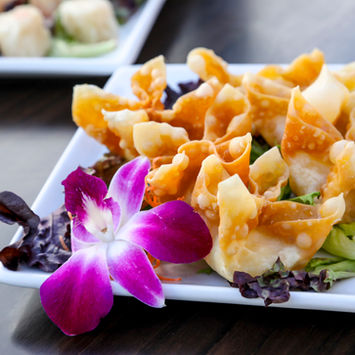
OKAMI
Japanese Hibachi Steakhouse & Sushi
WILMINGTON,NC

Open Daily
Experience the unique Japanese cooking style right before your eyes. These Japanese culinary experts are both excellent chefs and performers. Dinner entertainment for the whole family to enjoy in Wilmington, NC.
all you can eat sushi
 D41A0931 |  P15 |  D41A0969 |  D41A0918 |
|---|---|---|---|
 D41A0917 |  D41A0916 |  D41A0900 |  D41A0856 |
 D41A0829 |  D41A0791 |  D41A0813 |  Okami Japanese Steak house WilmingtoWilmington NC |
Location & Hours
COME AND ENJOY THE HIBACHI EXPERIENCE!
OPENING HOURS
Monday to Saturday
4 – 10 PM
Sunday
11 AM – 9:30 PM

ABOUT US
HIBACHI LIKE NO OTHER

We have reinvented "Hibachi Cuisine". Okami Japanese Hibachi Steak House in Wilmington NC is like no other. Our highly skilled chefs will not only cook an incredible dinner, but they will entertain you on the way. Our portions are large, our drinks are less expensive, and our staff is loads of fun.
At Okami Hibachi Steakhouse, we are committed to using quality ingredients and seasoning with guaranteed freshness. Our goal is to utilize all resources, domestically and internationally, to ensure that we serve only the finest food products. We believe that good healthy food aids the vital functions for well-being, both physically and mentally.
Our menu consists of a wide range of Steak, Seafood, and Chicken for the specially designed “Teppan Grill,” to the taste bud tingling Japanese Sushi, Hand Rolls, Sashimi, Tempura dishes and Japanese Noodle entrees. This offers our guests a complete Japanese dining experience.
Our Story
We have reinvented "Hibachi Cuisine"
It is not known when the hibachi was first used in Japan, however written records suggest that it was used by the Heian period (798-1185 AD). Owing to the low availability of metal in Japan, early hibachis were made from dug-out cypress wood lined with clay. However, craftsmen soon began to make more decorative versions with lacquered finishes, gold leaf, and other artistic embellishments.
Stronger materials such as metal and ceramics became popular over time. Traditional hibachis can be very attractive objects in themselves and are today sometimes sold as antiques. They were originally used mainly by the samurai classes and aristocrats but gradually spread among ordinary people. Their design developed throughout the Edo period.
For most of its history the hibachi was used for heating, but it has been put to many uses; for example, as a cigarette lighter and portable stove for Japanese troops during World War II.
The hibachi was once a common sight in Japan before the Second World War, and was often seen in waiting rooms at train stations, but it became a rarity and was gradually replaced by the oil heaters now commonplace in Japan. Central heating is relatively rare in Japanese homes.

FAVORITES
A LITTLE ABOUT SUSHI
Sushi (すし、寿司, 鮨, 鮓, 寿斗, 寿し, 壽司?) is a Japanese dish consisting of cooked vinegared rice which is commonly topped with other ingredients, such as fish or other seafood,[1] or put into rolls.
Sliced raw fish by itself is called sashimi, as distinct from sushi. Sushi that is served rolled inside or around nori, dried and pressed sheets of seaweed, is makizushi. Toppings stuffed into a small pouch of fried tofu is inarizushi. A bowl of sushi rice with toppings scattered over it is called chirashizushi.

FAVORITES
EVERYBODY LOVES TERIYAKI!

Teriyaki (kanji: 照り焼き; hiragana: てりやき) is a cooking technique used in Japanese cuisine in which foods are broiled or grilled in a sweet soy sauce marinade (tare in Japanese). Teriyaki is served in most modern Japanese cuisines.
Fish – yellowtail, marlin, skipjack tuna, salmon, trout, and mackerel – is mainly used in Japan, while meat – chicken, pork, lamb and beef – is more often used in the West. Other ingredients sometimes used in Japan include squid, hamburger steak and meatball.
The word teriyaki derives from the noun teri (照り?), which refers to a shine or luster given by the sugar content in the tare, and yaki (焼き?), which refers to the cooking method of grilling or broiling. Traditionally the meat is dipped in or brushed with sauce several times before and during cooking.[1]
The tare is traditionally made by mixing and heating soy sauce, sake or mirin, and sugar or honey. The sauce is boiled and reduced to the desired thickness, then used to marinate meat which is then grilled or broiled. Sometimes ginger is added, and the final dish may be garnished with green onions.
Teriyaki can also be served cold, as it often is in bento menus.























